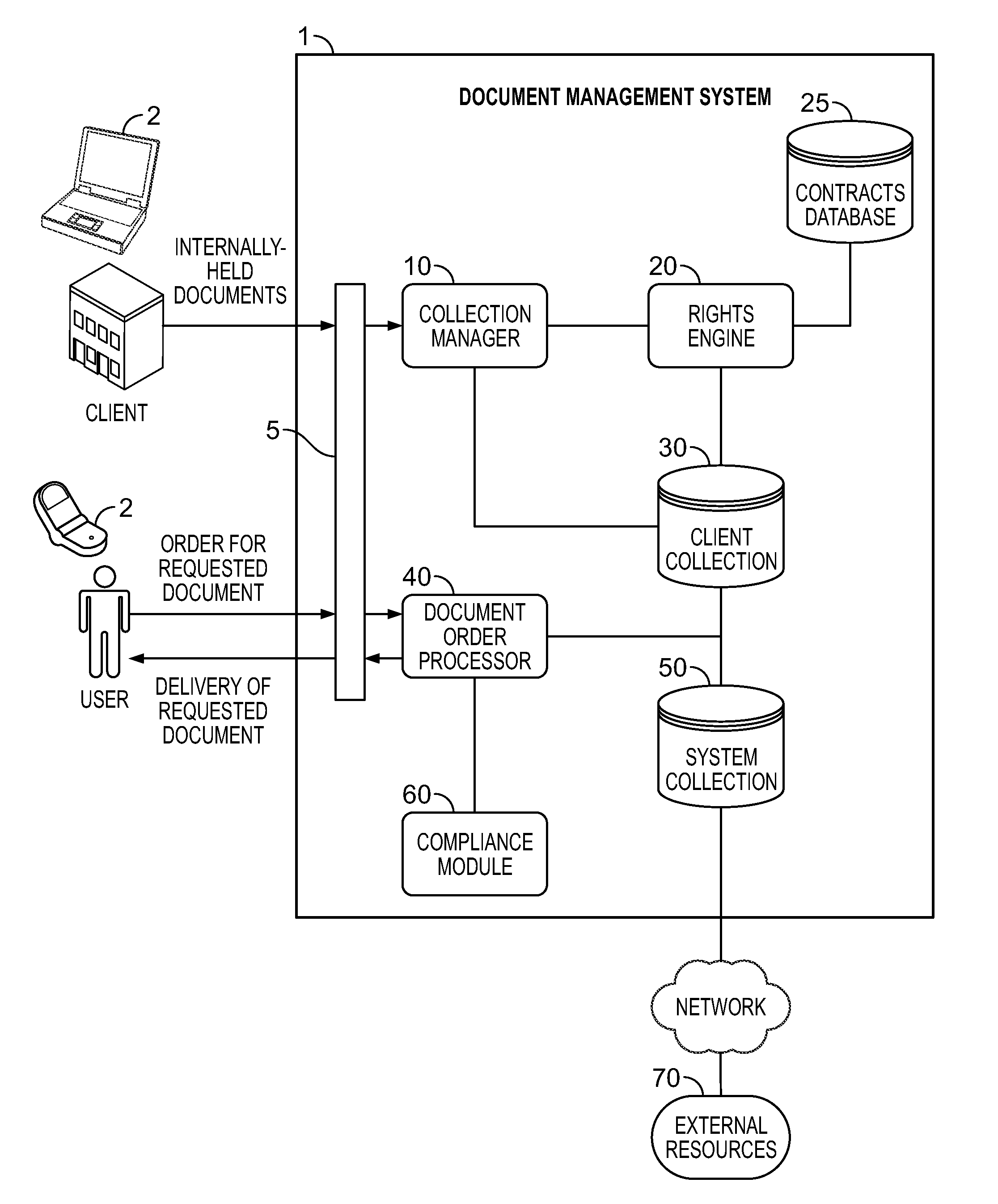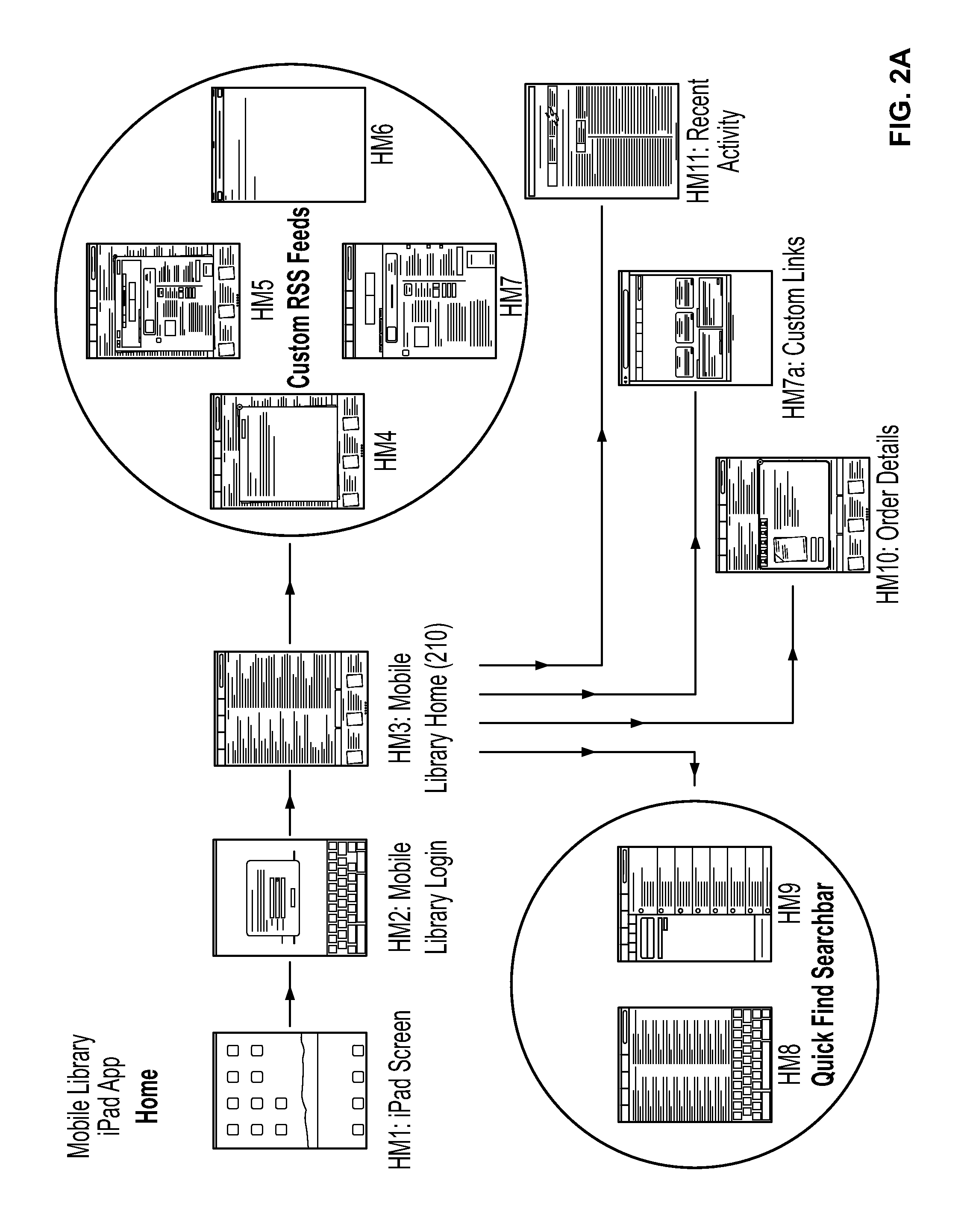System and method for the centralized management of a document ordering and delivery program
a document ordering and delivery program technology, applied in the field of document management systems, can solve the problems of not meeting applicable copyright rights and regulations, failing to leverage inherent efficiencies in the copyright clearance and order fulfillment aspects of the process, and expensive efforts to obtain the desired documents. achieve the effect of ensuring copyright compliance, ensuring quality, and ensuring cost-effectiveness
- Summary
- Abstract
- Description
- Claims
- Application Information
AI Technical Summary
Benefits of technology
Problems solved by technology
Method used
Image
Examples
Embodiment Construction
[0033]The present invention relates to a method and a system for managing a document ordering program. FIG. 1 depicts a Document Management System 1 according to embodiments of the present invention. As used herein, the term ‘document’ is intended to include, but is not limited to, any article, publication, journal, book, proceeding, patent, patent publication, newsletter, and paper, in hard-copy and / or electronic format. The Document Management System 1 is a computer-based system, accessible by one or more ‘users’ associated with a client (i.e., a company) which has been granted the necessary authorization and access to the Document Management System 1. As used herein, the term ‘user’ is intended to include, but is not limited to, any employee, agent, contractor, or computer associated with the client. As used herein, the term ‘client’ is intended to include, but is not limited to, a company, corporation, entity, organization, or the like, and the related computing environment conf...
PUM
 Login to View More
Login to View More Abstract
Description
Claims
Application Information
 Login to View More
Login to View More - R&D
- Intellectual Property
- Life Sciences
- Materials
- Tech Scout
- Unparalleled Data Quality
- Higher Quality Content
- 60% Fewer Hallucinations
Browse by: Latest US Patents, China's latest patents, Technical Efficacy Thesaurus, Application Domain, Technology Topic, Popular Technical Reports.
© 2025 PatSnap. All rights reserved.Legal|Privacy policy|Modern Slavery Act Transparency Statement|Sitemap|About US| Contact US: help@patsnap.com



